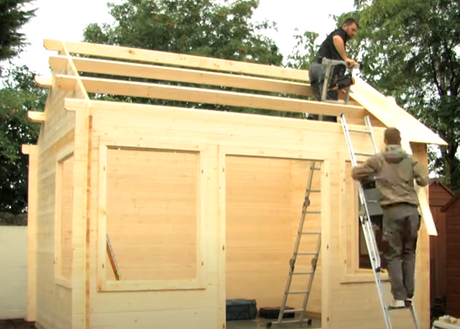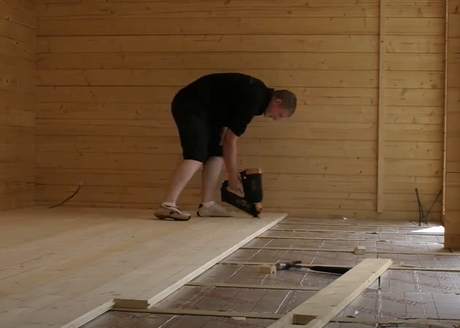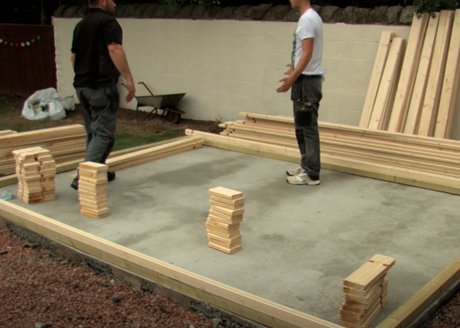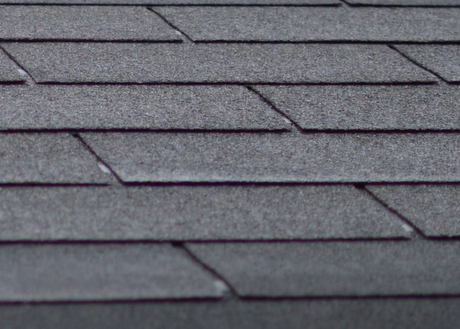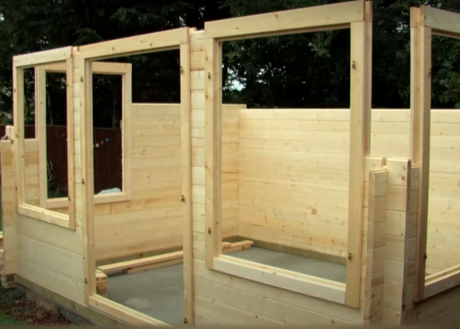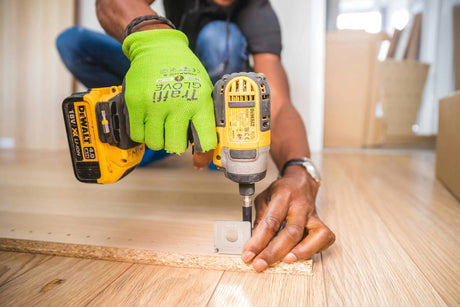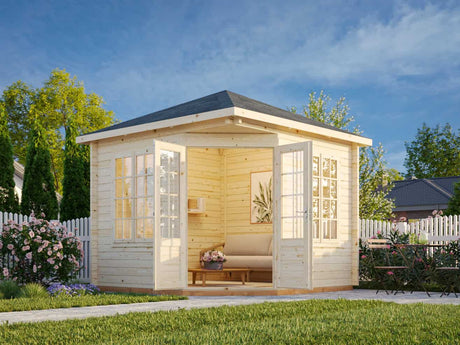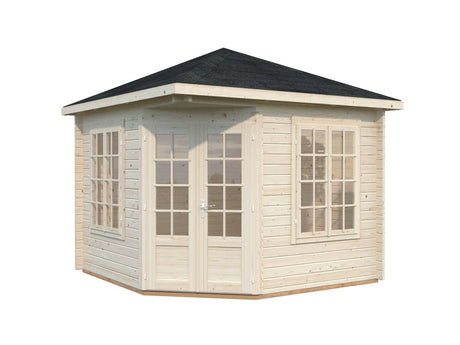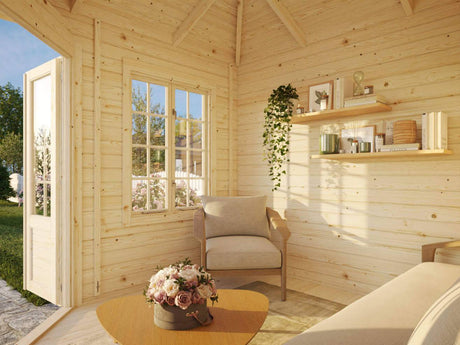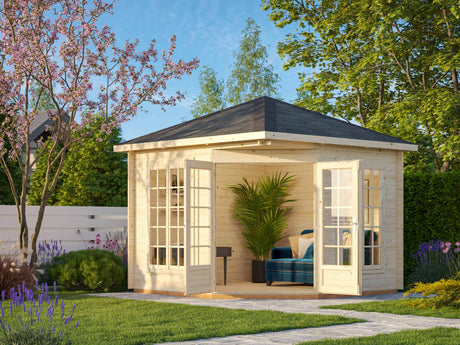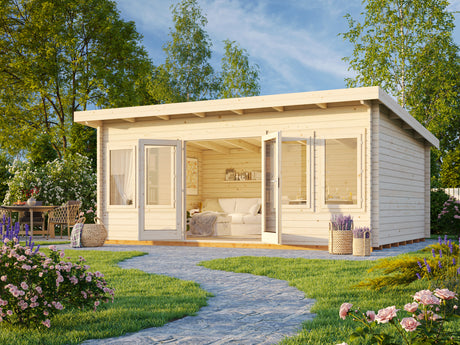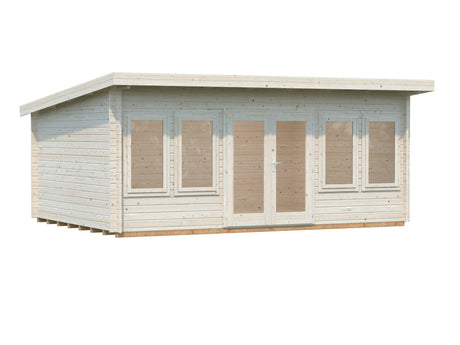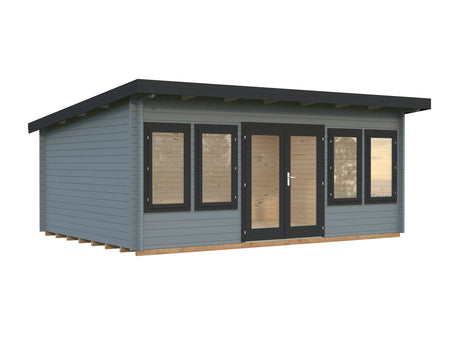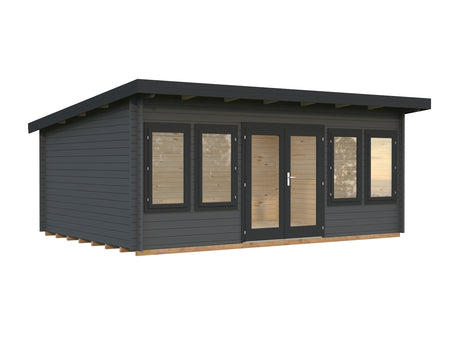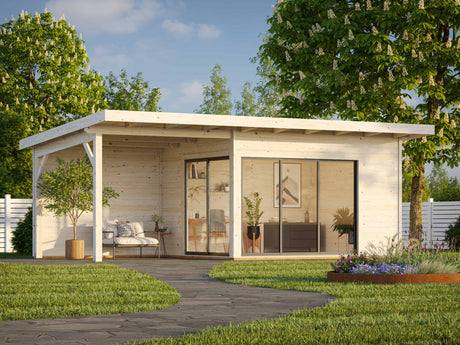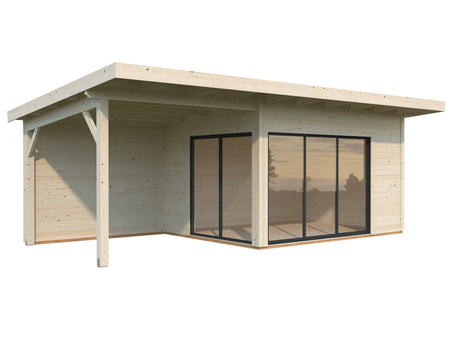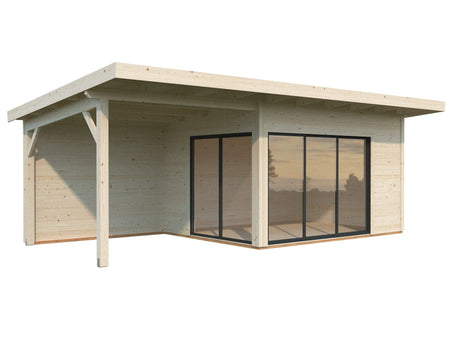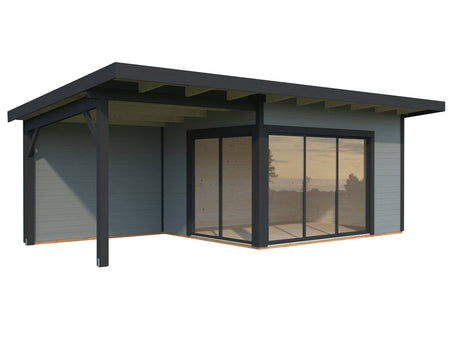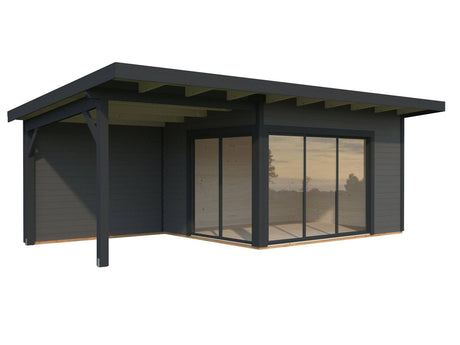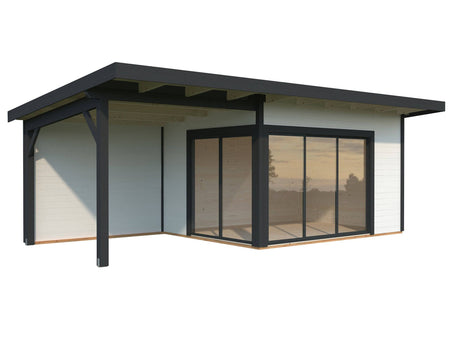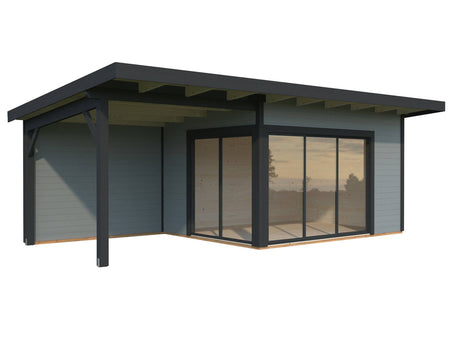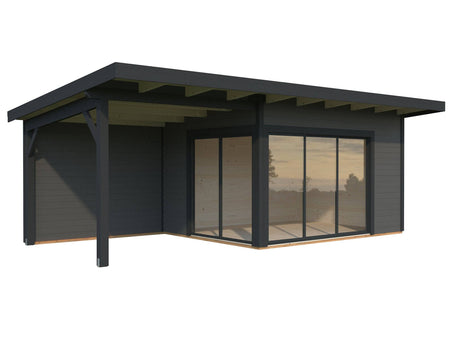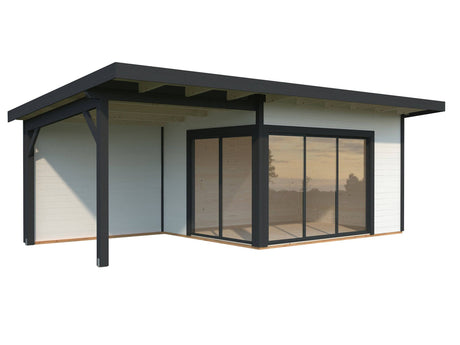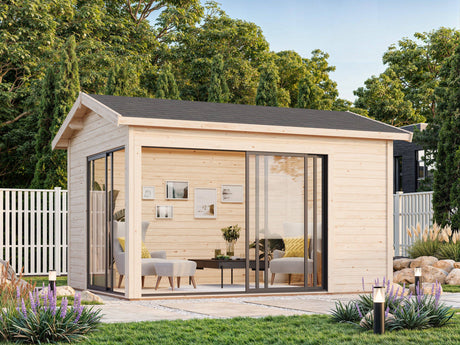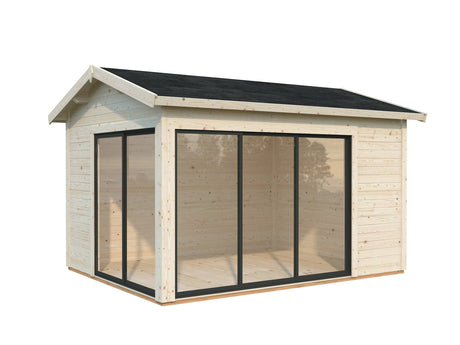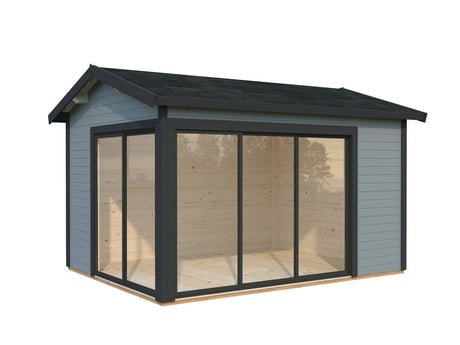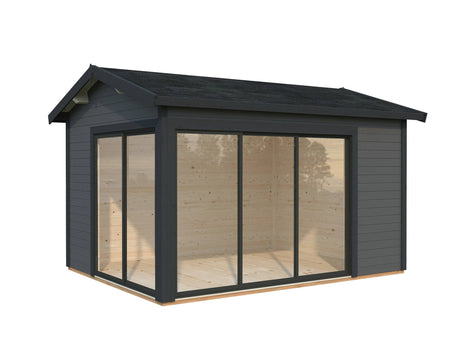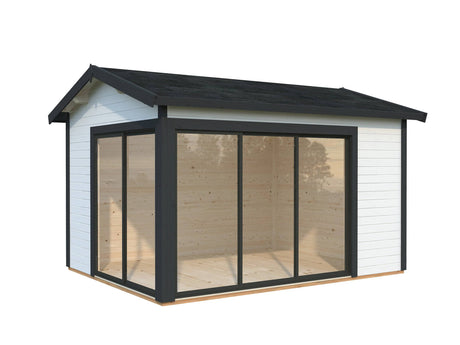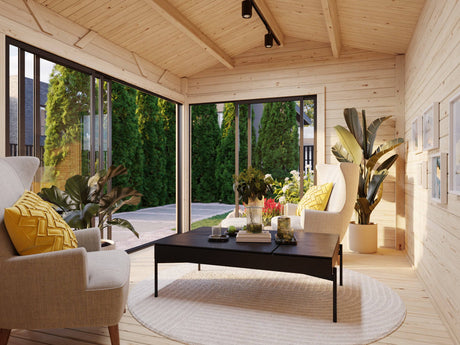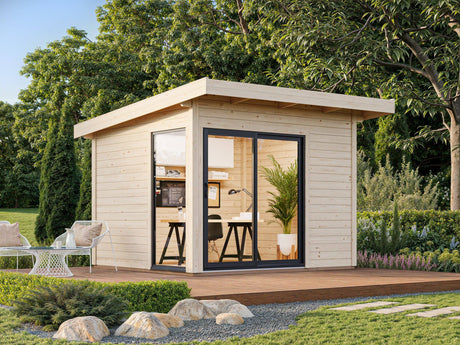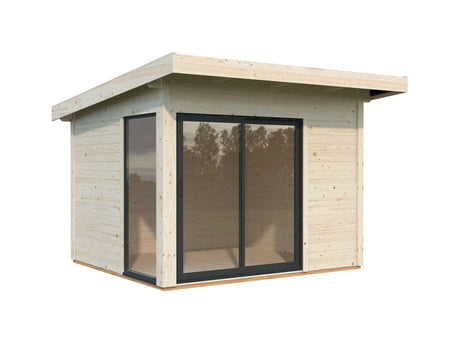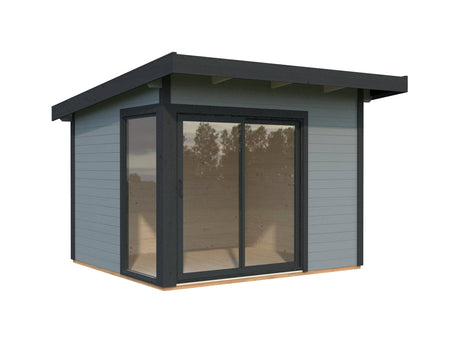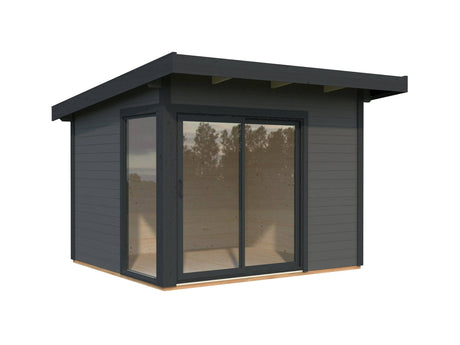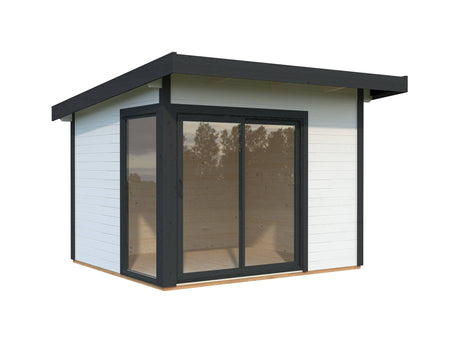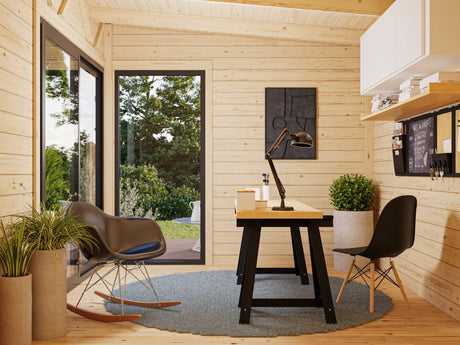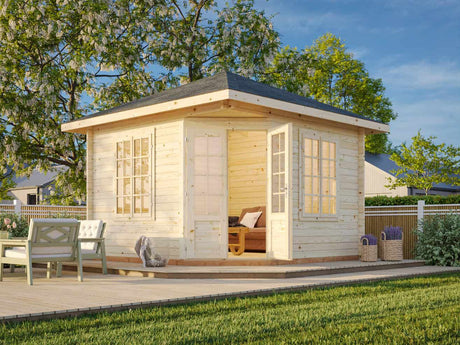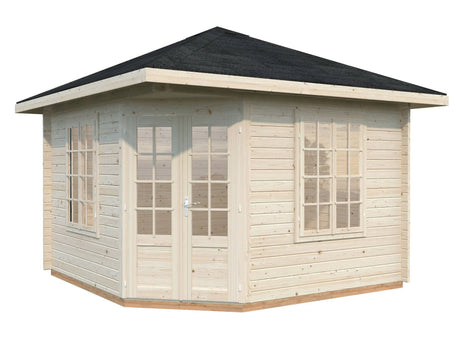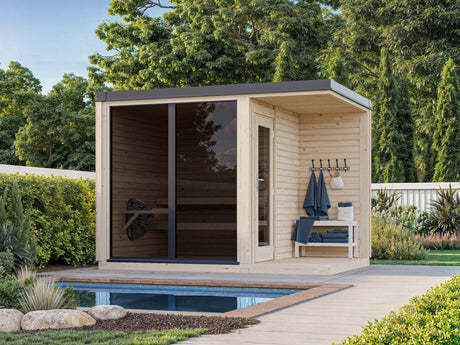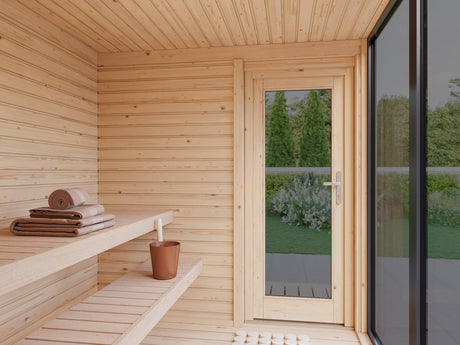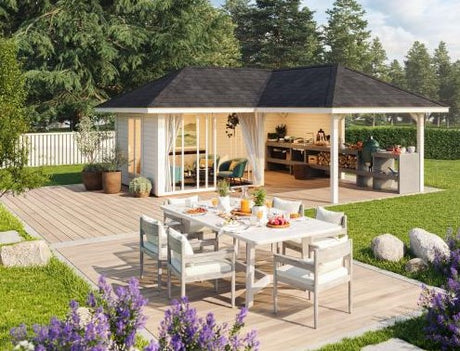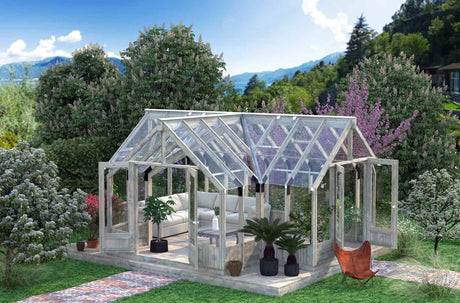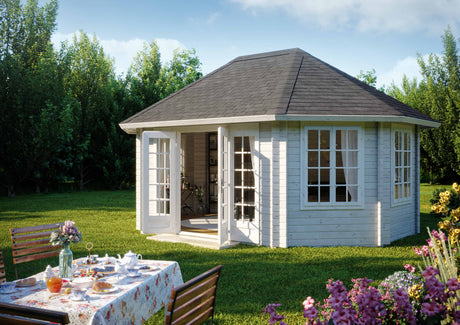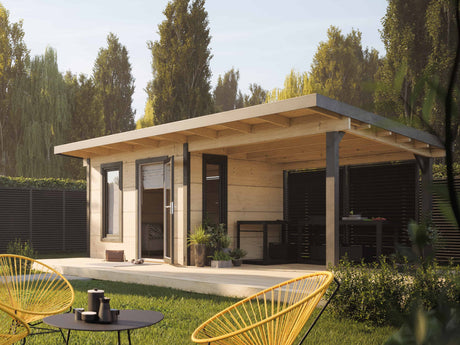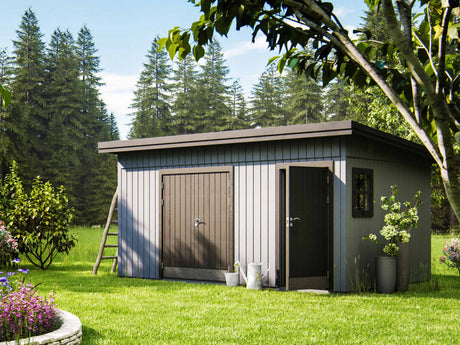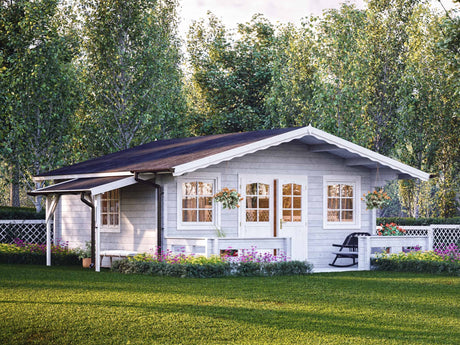Reviewed by the Palmako UK content team with insights from our garden building experts.
The sauna has been part of human history for thousands of years, and some forms of sauna even date back as far as 4000 B.C.E. During the centuries it has evolved many times from being a steam bath, to a smoke sauna, to log cabins with steam stoves, and now in our modern age there are several variations to please the tastes of every sauna enthusiast. [1]
Join us as we discuss the different types of saunas and explain the features and benefits of each one, so that you can choose a sauna that best suits your health goals, budget, and lifestyle. With so many choices available, you can be sure you’ll find something you like.
Quick Overview
There are six types of saunas available for home use, namely: Traditional, Electric, Infrared, Steam, Finish, and a Hybrid option. Each one offers different levels of heat, humidity, and health benefits. The type of sauna you choose depends on your desired comfort level, budget, and the results you’re after, whether it’s stress relief, joint pain support, or a daily relaxation ritual at home.
Table of Contents
4. Steam Sauna
6. Hybrid Sauna
6 Types of sauna: A summary
Knowing what health benefits you’d like to get from sauna bathing only gets you halfway. The other half of the decision lies with which sauna you will enjoy the most, on the way to those benefits. A quick bird’s-eye view of the different saunas will help you consolidate your thoughts towards the sauna you want.
|
Sauna Types |
Features |
Benefits |
Average Cost |
|
A wood-burning stove heats rocks, creating a dry environment with temperatures between 70°C and 100°C. Water can be ladled onto the rock,s creating bursts of steam which increase humidity and intensify the sensation of heat. |
Sweating |
£2,000 - £4,500 |
|
|
A modern variation on the wood-burning sauna, electric sauna stoves heat stones that create a dry environment. |
Sweating |
£2,000 - £5,000 |
|
|
Infrared sauna |
Infrared heaters are used to heat the body directly instead of the air. For this reason, the temperature is much lower, between 40°C and 60°C. The infrared waves penetrate the skin, promoting deep tissue relaxation. |
Longer sessions due to lower temperature |
£1,200 - £7,000+ |
|
Steam sauna |
Also known as Turkish saunas, or wet saunas. This type of sauna is operated at lower temperatures of around 40°C–50°C. Steam quickly increases humidity (can go up to 100%), and therefore temperatures have to be lower, preventing any health risks. |
Opens skin pores Improves relaxation Soothes respiratory passages |
£2,000 - £8,000+ |
|
Traditional Finnish sauna |
The Finnish sauna is the original dry sauna, often heated between 70°C and 100°C. It features a wooden interior, hot stones and low humidity, unless steam is generated by pouring water over the stones. |
Shorter, more intense sessions for deep relaxation of muscles, and detoxification |
£1,500 - £5,000 |
|
Hybrid sauna |
A hybrid sauna is a combination sauna with both an electric stove to heat stones and an infrared heater. This provides the user with the benefits of both these saunas, but all in one place. |
Sweating Longer sessions due to lower temperature Deep tissue relaxation Pain relief Improved circulation |
£2,500 - £4,000+ |
If you want to delve deeper into the running costs of saunas in the UK, our resource: How much does a sauna cost to run in the UK will break it down for you.
Different sauna types: A deep dive
1. Traditional sauna

The modern sauna that we’re accustomed to originated in Northern Europe, where the sauna can be found in virtually every home. Since the 80s, the sauna room has been built into apartment buildings, and even communal steam rooms can be found in public spaces. Under normal circumstances, temperatures exceeding 100 °C with high humidity would be fatal, but the Finns overcame this problem by learning to control the humidity. A traditional sauna usually has multi-tiered benches providing different levels of heat for bathers.
A wood-burning stove typically takes between 20-30 minutes to heat up. For greater comfort (and for sessions to last longer), bathers place towels on the benches and even over their faces. Sauna traditions in Northern Europe are different; for example, in a Russian sauna, the bathers wear a felt hat (Russian banya) to protect their heads from high temperatures.
Thanks to modern construction, high-quality garden saunas offer all sauna enthusiasts the chance to recreate the experience in their own homes, even though a breakaway to Northern Europe sounds like a wonderful sauna experience. If you prefer dry heat, find wood-burning saunas deeply relaxing, and love the idea of sweating out the day’s stress in the peace and quiet of a wooden sauna cabin, then go traditional.
2. Electric sauna
Palmako Timber Oval Garden Sauna
While they are visually similar to traditional saunas, the electric sauna relies on a thermostat-controlled electric stove with heated rocks to increase air temperatures. This offers a more consistent indoor temperature, which is easier to control than wood stoves. Common temperatures reach between 70 °C and 100 °C. This hot air increases body temperature gradually, promoting relaxation.
These saunas are popular because they offer a clean and highly controlled sauna that is easy to use, and only takes 15-20 minutes to heat up. Programmable timers, temperature control units, and safety switches make these saunas ideal for urban areas.
🔥 Discover Your Perfect Sauna: Explore the Palmako Sauna Collection and find the ideal fit for your garden or spa retreat.
3. Infrared sauna
Palmako barrel sauna with glass wall (infrared heaters excluded)
Far Infrared saunas provide a modern alternative to the traditional sauna because they use infrared heat to warm the body instead of the room. Infrared panels emit radiant heat, directly warming the skin. It is a gentler heat than the traditional or electric sauna and is good for longer sessions with a general temperature of between 40 °C and 60 °C.
Far infrared radiation is by far the most effective when it comes to penetrating body tissues, and also reduces inflammatory conditions around the joints, relieving conditions such as arthritis and joint pain. Infrared therapy can also be used before a sports or exercise session to relax the muscles, thereby reducing the risk of injury.
4. Steam sauna
Palmako 8.2 m² sauna cabin with a separate lounge area
Steam saunas are known as steam rooms, or Turkish hammam, and create an entirely different experience from the traditional sauna experience. Steam saunas typically provide moist, humid, and dense air through the use of heated rocks. Water is poured onto the rocks to provide short bursts of steam. Temperatures are set lower than infrared and traditional saunas because of the increased humidity.
The link of the steam room to the Turkish hammam reveals a long history rooted in Roman and Byzantine bathing traditions, going back to the 1400s. These rooms became central to cultural and social life. Even today, some homes contain elaborate decorated steam rooms where family members will gather to relax and socialise. For some, this type of sauna is the ultimate luxury where warmth and moisture create a feeling of relaxation and well-being that soothes the body and mind.
Other steam saunas can use separate boiler units or steam generators that continually fill the space with a thick mist that clings to the skin, and helps to open the pores, which some feel has an added detoxifying effect. Furthermore, steam sauna sessions can:
- Clear congestion
- Improve skin hydration
- Improve circulation
- Ease respiratory congestion
- Lower joint stiffness
- Support muscular recovery [2]
🧖 Get Inspired: Browse our best-selling saunas and imagine your very own home wellness space brought to life.
5. Finnish sauna

The Finnish sauna has been the cornerstone of sauna culture for hundreds of years. It is a practice passed down through generations and seeped in a rich culture. Heated between 70 °C and 100 °C, it creates a dry environment with the option of adding bursts of humidity by throwing water over hot stones (a practice called löyly).
Sauna masters favour this type of sauna because it allows you to create different levels of heat and humidity, and also use ice, essential oils or herbs to personalise your session. Another recognizable feature of a Finnish sauna is the simple wooden design, wood-lined interiors with benches at different heights, and a large heater in the centre.
In Finland, sauna is a way of life, and it’s not uncommon for families to sauna together at the end of a day to relax and reset the entire mood of the household. Important discussions have taken place for many generations in the soothing heat of the sauna.
At your home, recreating this wonderfully rich culture requires an investment in a wooden cabin, with either a wood or electric stove and heated stones. Add a cold plunge pool to your sauna room, and you’ll have found the ultimate benefits of both hot and cold therapy. But for purists, nothing beats the original Finnish sauna experience.
6. Hybrid sauna

When you can’t decide between a dry heat sauna and an infrared sauna, don’t feel pressured to make a choice. There are hybrid saunas available that combine both an electric heater with heated stones and far infrared heaters for when you need red light therapy. These types of saunas offer you the best of both worlds.
Use the electric stove for an authentic sauna experience and the infrared panels for deep penetrating heat to treat muscle and joint aches and pains. The ability to change between these two modes of sauna makes the hybrid version perfect for families or couples with different sauna preferences.
Some innovative designs are combining new medical technologies such as chromotherapy (colour therapy) and music therapy alongside heat therapy, achieving a full-body and mind experience for the sauna enthusiast. So, if you love traditional saunas but want to move with the times, a hybrid sauna is the perfect combination.
Sauna is more than a room; it’s a lifestyle
Sauna is a lifestyle - one that many people around the world enjoy. Some are more casual about their sauna experiences - others are fanatical. No matter what you taste, your health goals, or your desired lifestyle, there is a sauna to suit everyone, and you can have one sooner than you imagined. Call one of our Palmako experts, and we’ll get you the perfect match and make those long-held sauna dreams come true.
References:





